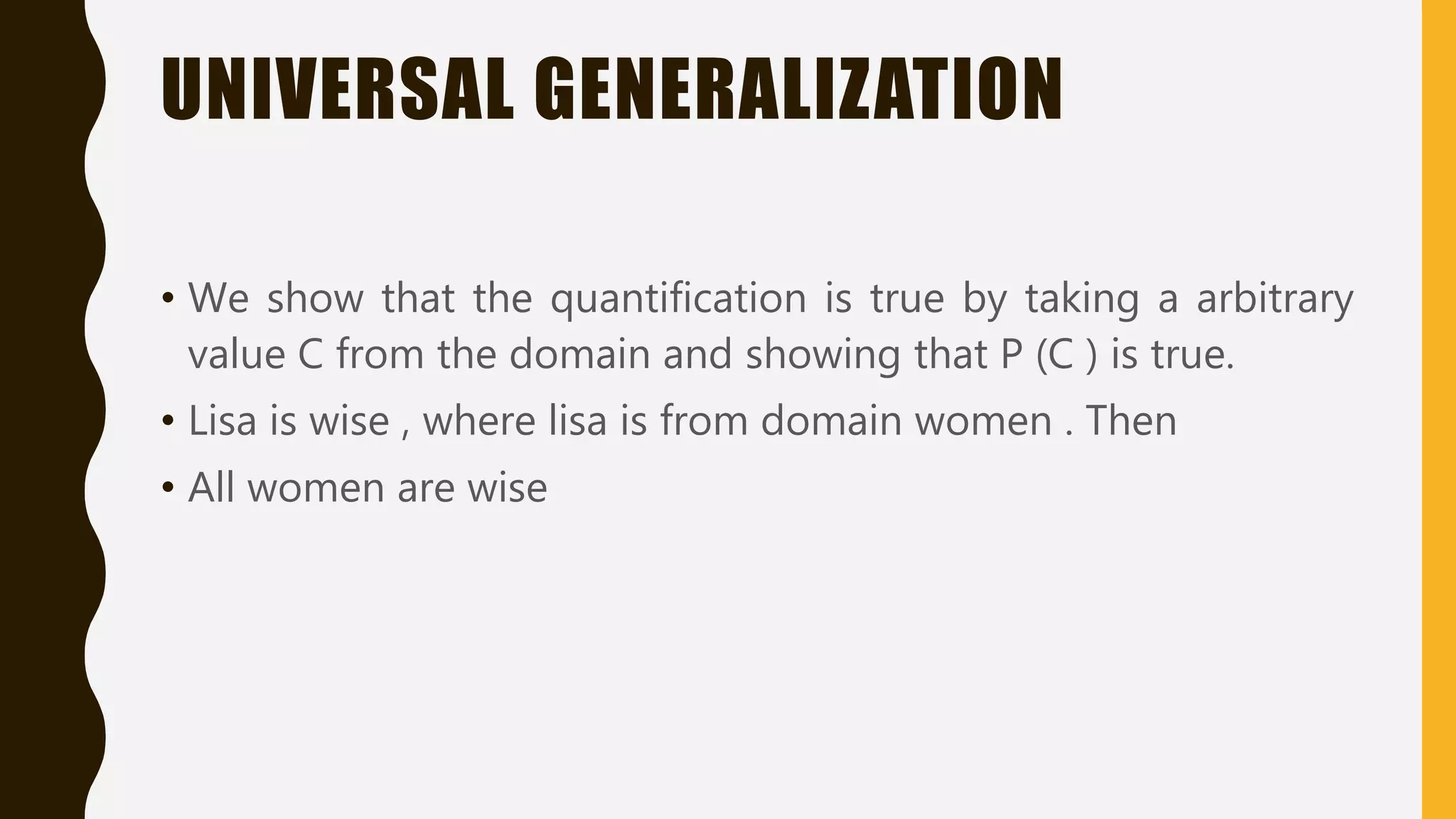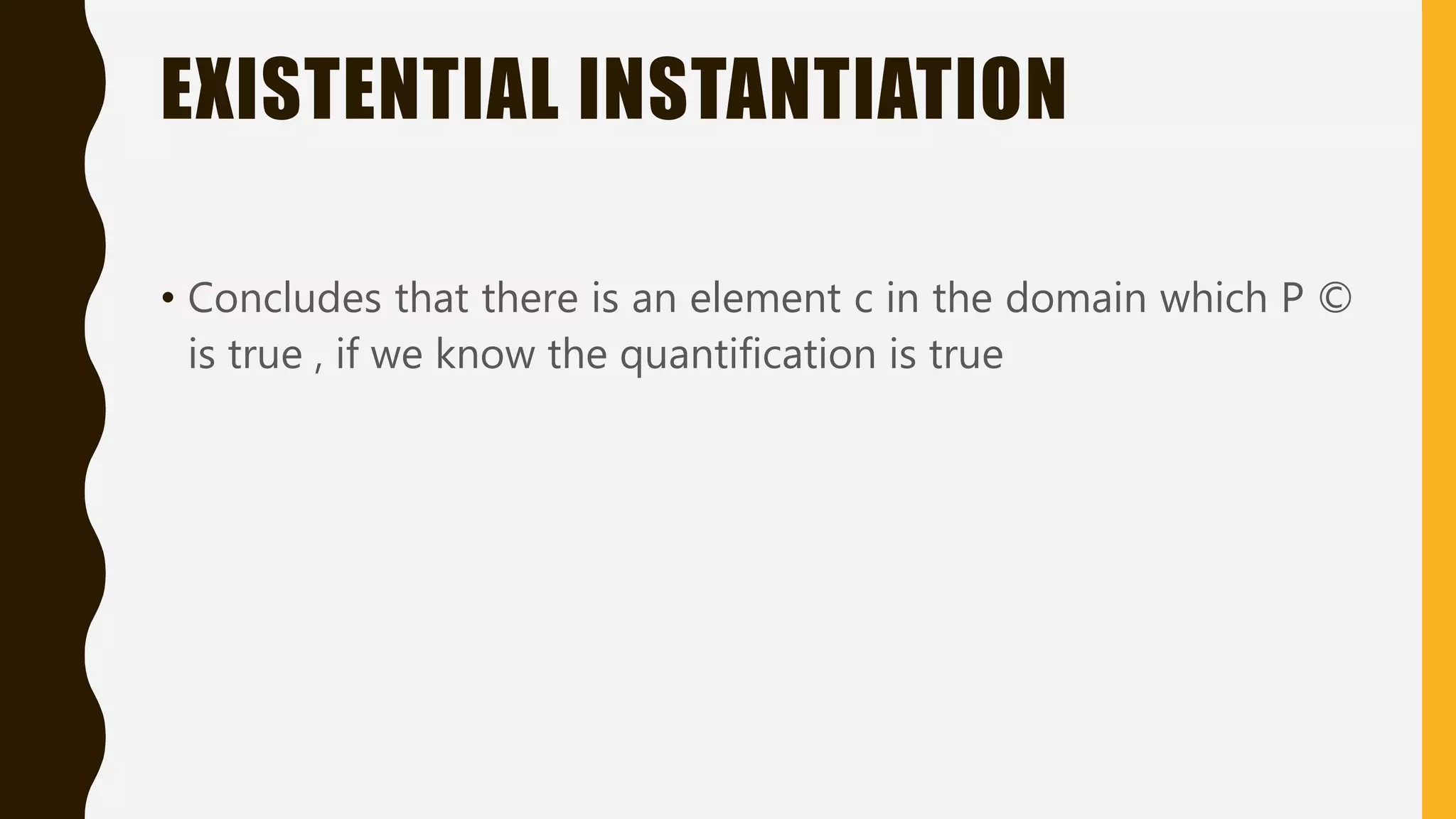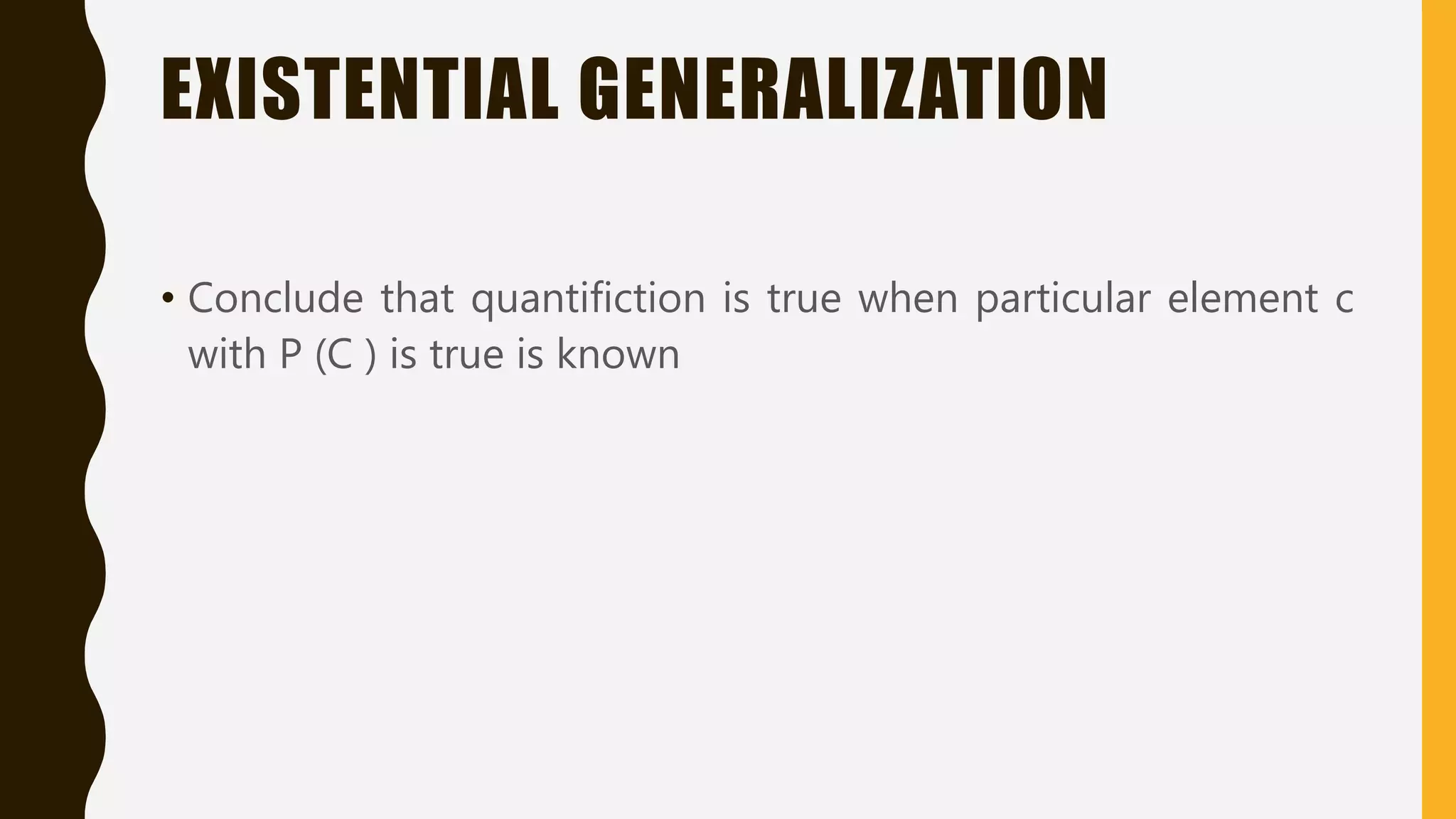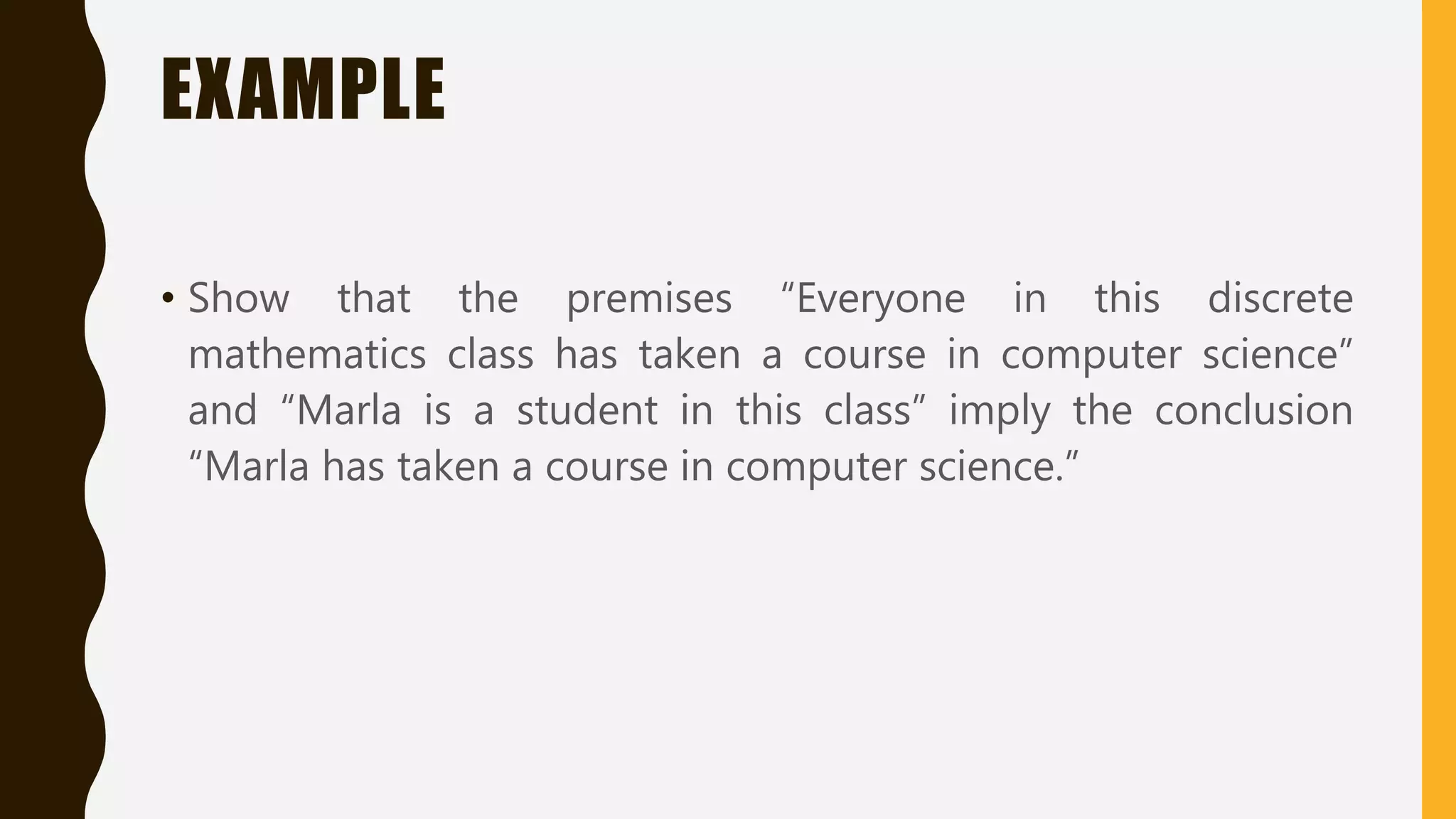This document provides an introduction to propositional logic and rules of inference. It defines an argument and valid argument forms. Examples are given to illustrate valid argument forms using propositional variables. Common rules of inference like modus ponens and disjunction introduction are explained. The resolution principle for showing validity of arguments is described. Examples are provided to demonstrate applying rules of inference to build arguments and use resolution to determine validity. The document also discusses fallacies and rules of inference for quantified statements like universal and existential instantiation and generalization.
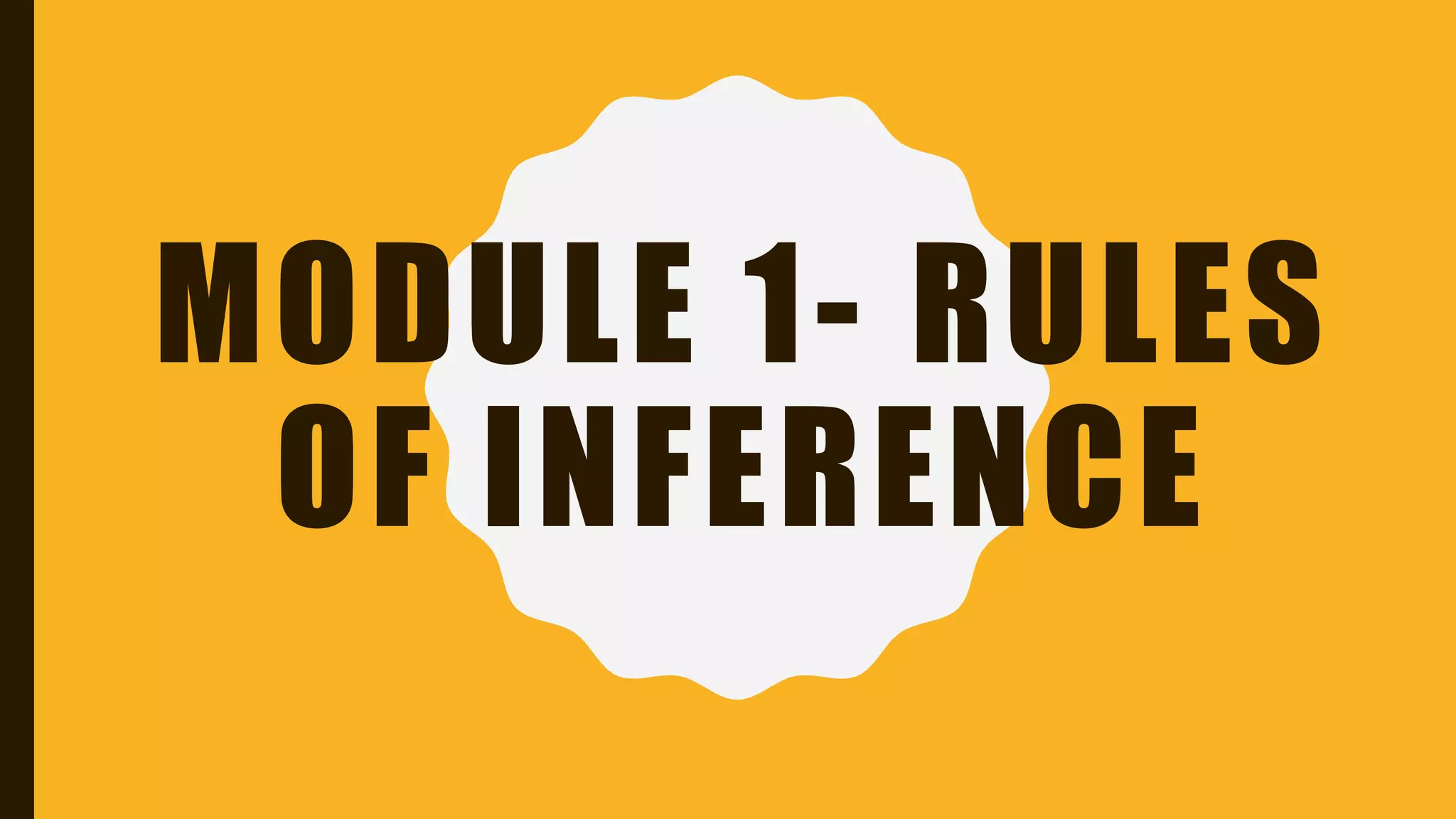
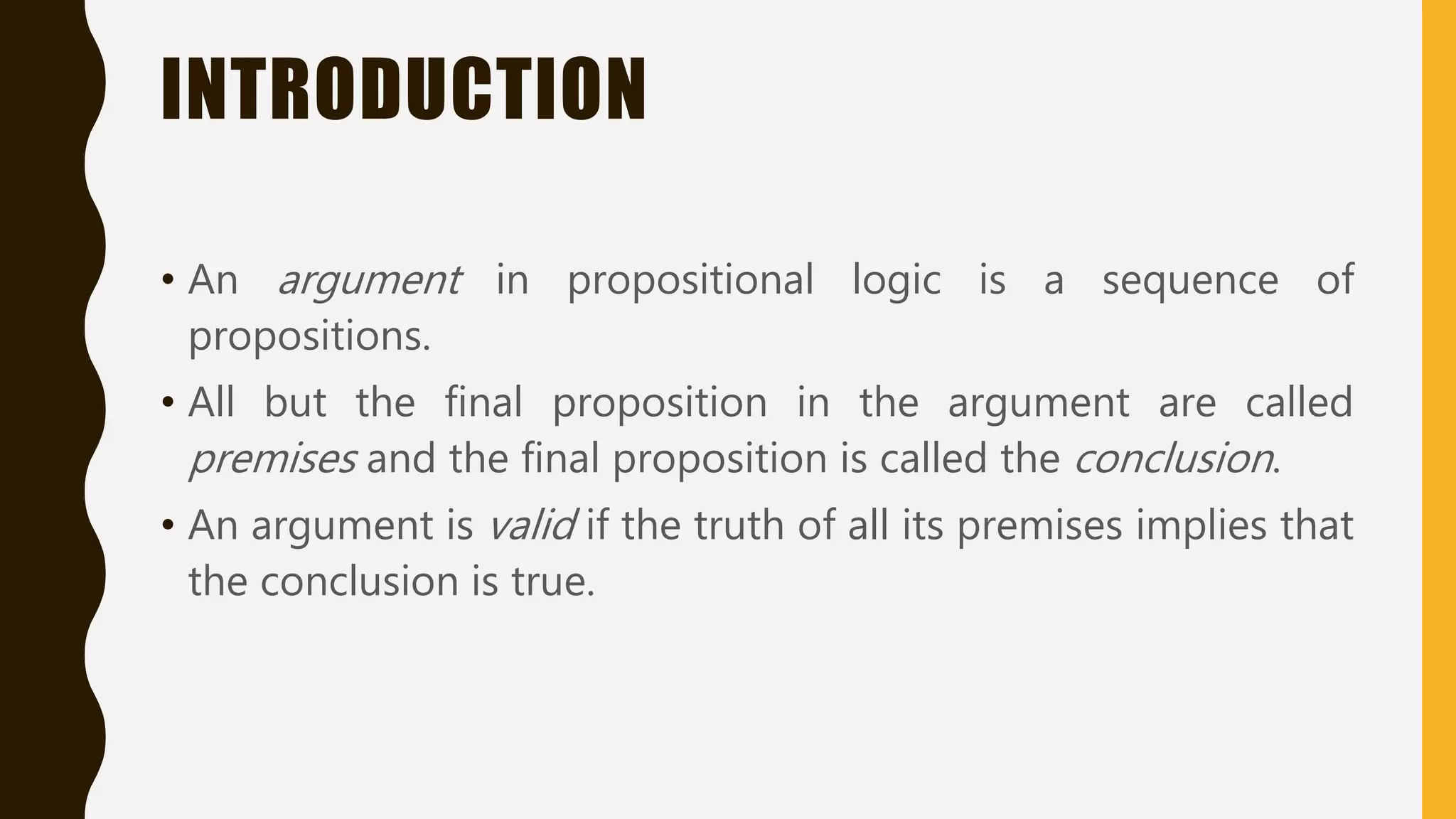

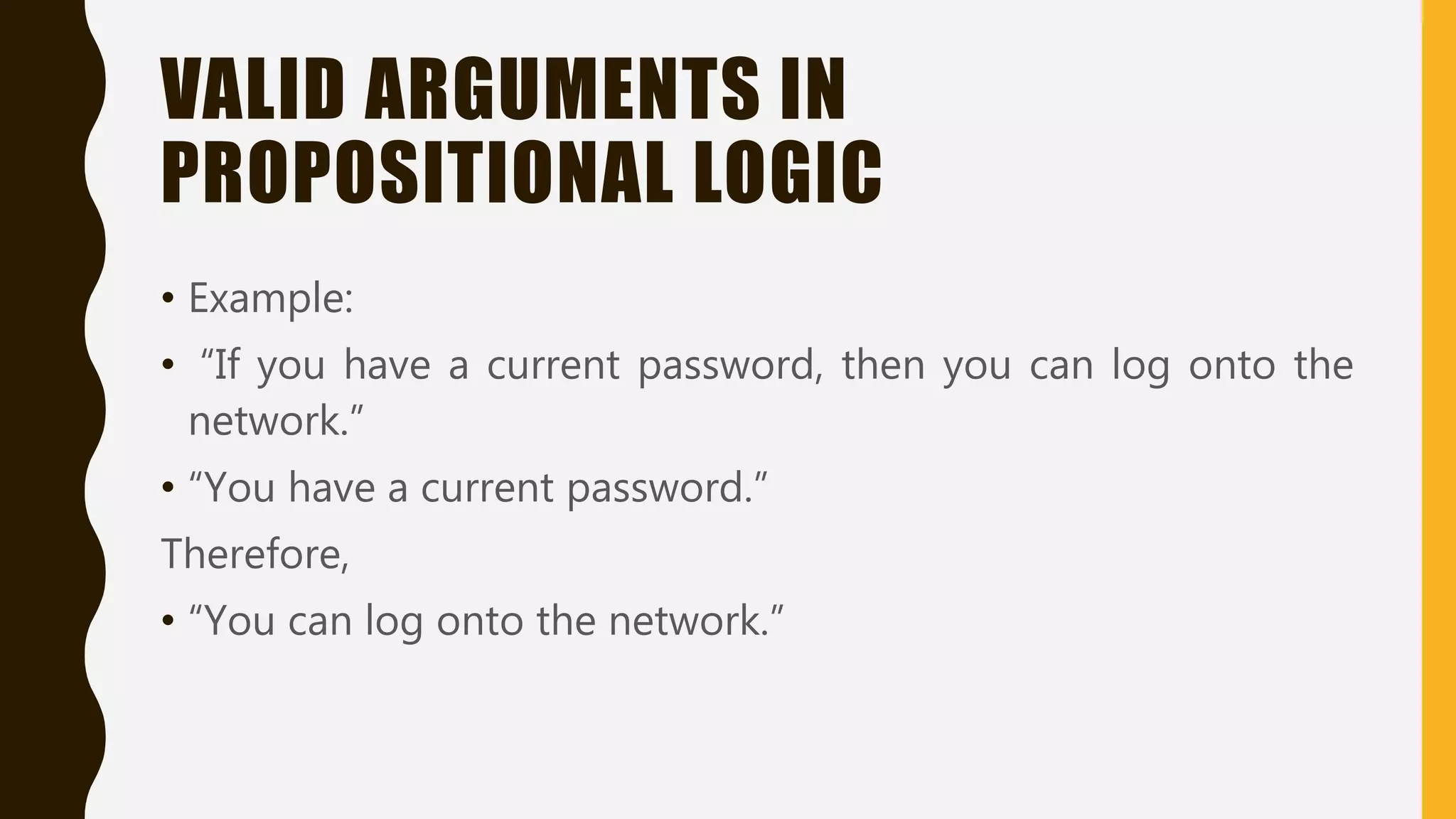
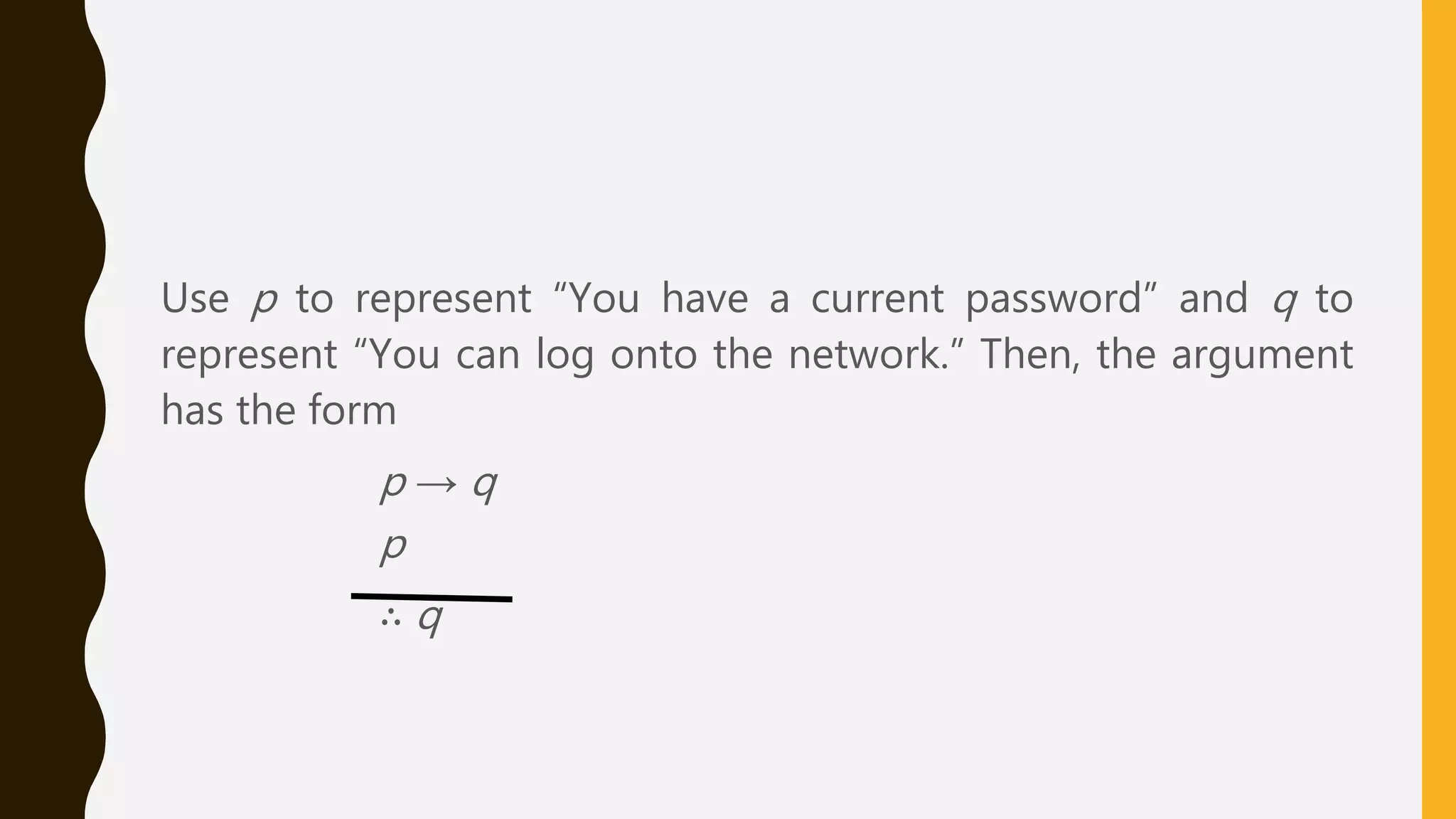
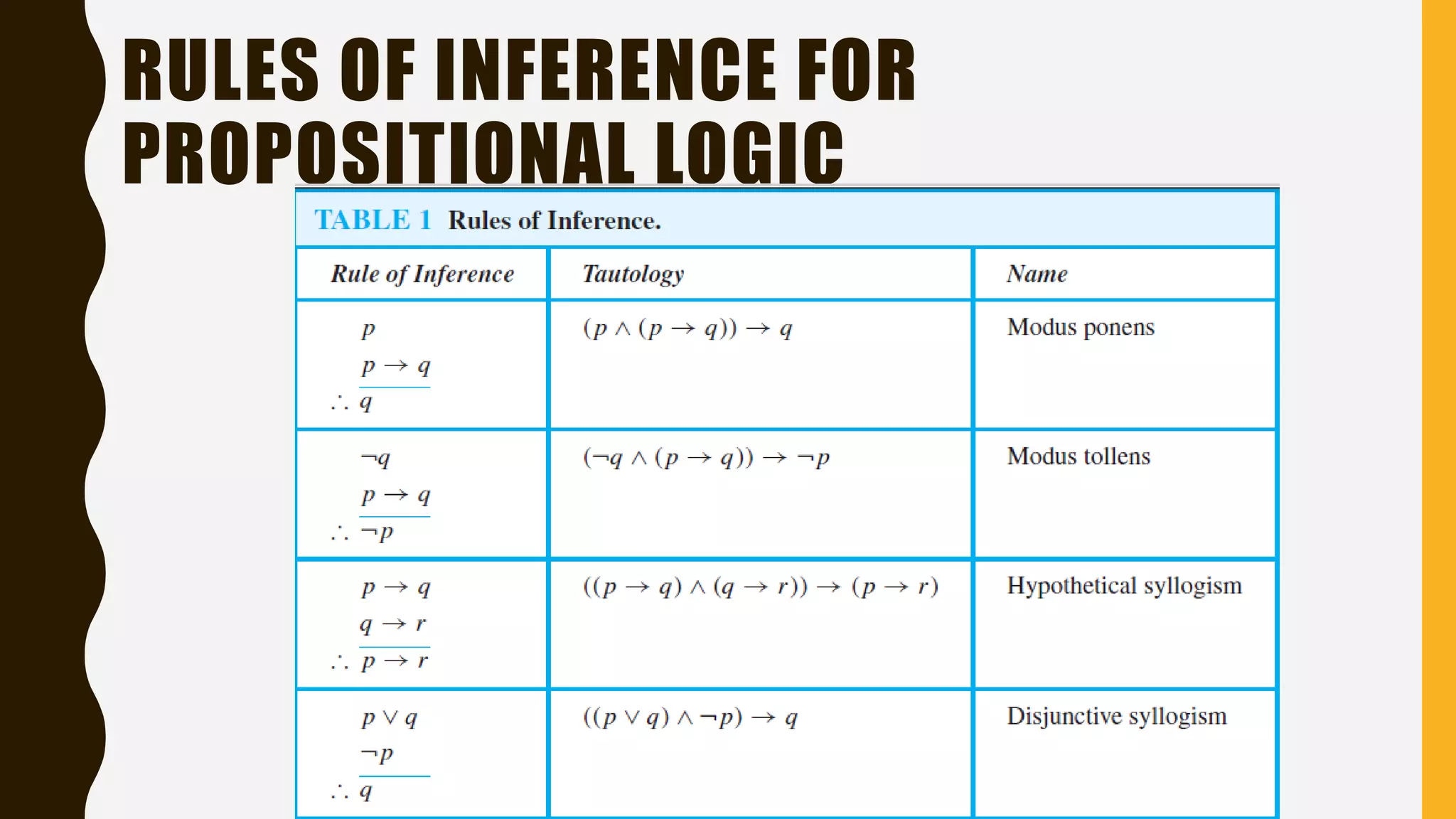




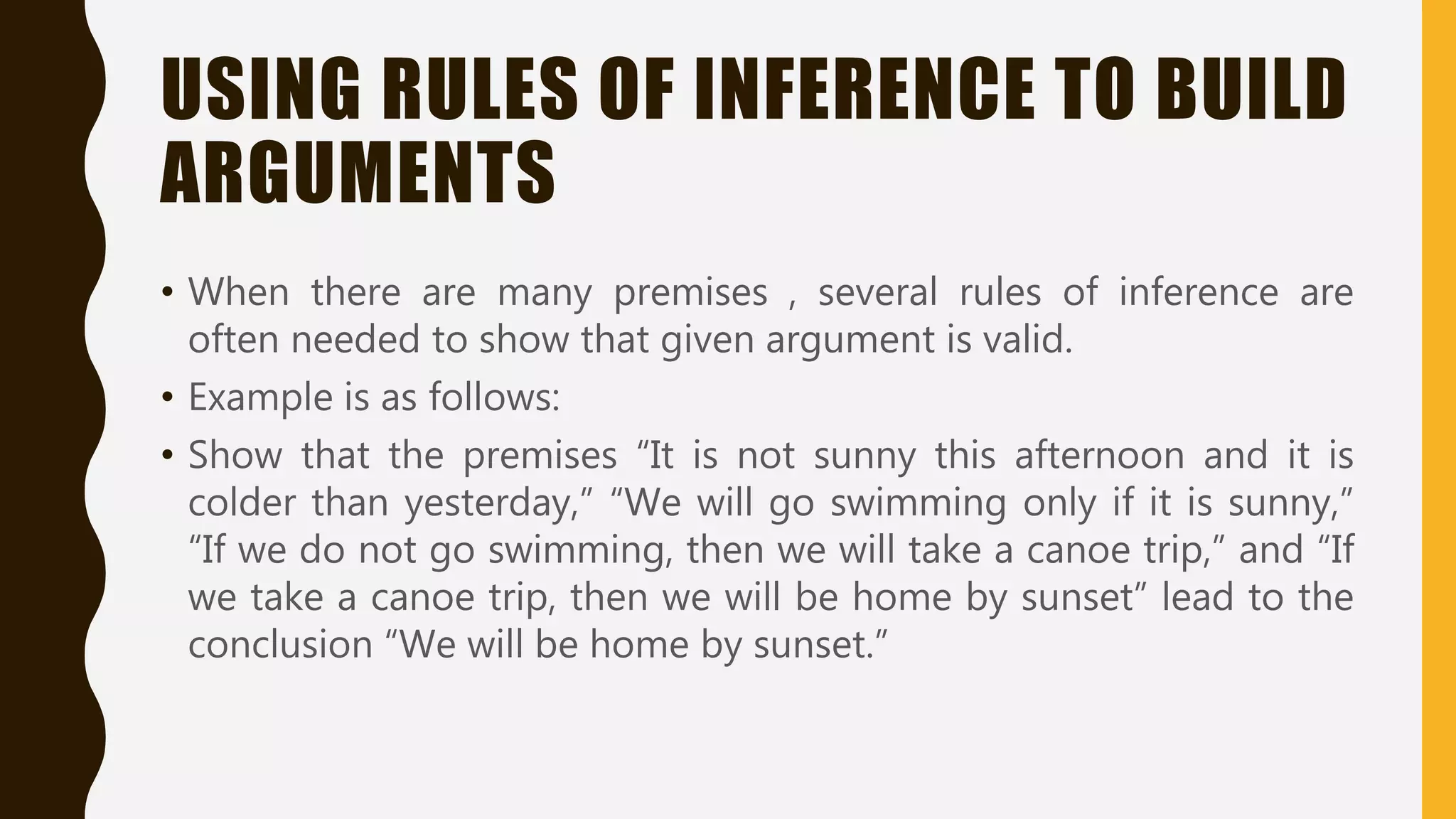



![RESOLUTION PRINCIPLE (FORMAL
DEFINITION)
• Given S set of clauses , a resolution or deduction of C from S
is finite sequence C1, C2, … Ck of such clauses such that each
C1 is either is a clause in S or a resolvent of the clause
preceding C and Ck=C. A deduction of empty [] is called
refutation or proof of S](https://image.slidesharecdn.com/unit1rulesofinference-170113152312/75/Unit-1-rules-of-inference-15-2048.jpg)




